Roads unite people. Every day it is estimated that millions of vehicles circulate on the roads.
At Metalesa, our goal is to ensure the safety of people. For this reason, we take care of guaranteeing safety while driving with our containment systems such as bridge parapets, terminals or crush cushions. However, on the roads there is another danger that is not seen, but heard. And not for vehicle occupants, but for the people who live around road infrastructures: noise pollution.
Noise pollution is a problem that we face every day both on roads and in urban environments. Its effects are harmful to people and the environment, therefore, society is increasingly becoming aware of it and taking action through specific action plans governed by the authorities.
Acoustic studies on roads
Precisely, one of these measures is the performance of acoustic studies. The pollution of a specific area can be measured with noise maps. If an excess of noise is concluded as a result of such study, the next step is to configure the optimum solution to attenuate it, normally with an acoustic screen.
Undoubtedly, acoustic screens are the best corrective measure to reduce the propagation of noise generated by road or rail traffic, since they act as a barrier between the receiver and the noise source, both absorbing and reflecting the noise waves. Thus, acoustic screens are the most widely used anti-noise systems in transport infrastructures, due to their rapid installation, their value for money and their effectiveness.
Our acoustic screens
At Metalesa, through the installation of our acoustic screens, we ensure the quality of life of people who struggle day to day traffic noise.
Our acoustic screens are conformed of sound-absorbing panels that provide quality acoustic and mechanical solutions. No only they minimize noise pollution from traffic on roads and railways, but also from many other sources such as industrial facilities (factories,…), commercial malls (air conditioning equipment), or massive events in public/private facilities (sport stadiums, leisure clubs, hotels…). All of our acoustic screens comply with European standards EN14388, EN16272 and EN16727.
Learn more about the Regulation of noise reduction devices for roads.
How to decide among different type of acoustic screens?
There are multiple drivers to analyse when choosing the right acoustic screen for a certain project.
- On the one hand, the requirements defined by the acoustic study should guide the project.
- It is essential to take into account the environmental and climatological agents to which the panels will be exposed. Mainly the wind loads that dictate the mechanical loads that the panel must support. Our experts in calculation of structures have extensive experience in designing the optimal solution for each case. But also other aspects such as the type of environment, which derives in different levels of corrosivity, and before which, the appropriate finishes must be applied. Or even climate or exposure to snow which may recommend different materials.
- Finally, aesthetics is another part of the decision. Goals such as integration with a forest or a green landscape, or even keeping nice views of an attractive panorama, are issues to take into account and that can make one solution more convenient than another.
All these aspects must be taken into account together so that the technicians in charge of carrying out the project select the panel that best suits the needs of each acoustic screen work. We have several panel configurations for each scenario, all of them accredited by tests carried out in accredited laboratories: metallic steel or aluminum, methacrylate, wood or vegetable mesh. Having said that, the most commonly installed screens for road and railway infrastructures are steel ones. We have numerous models that solve any casuistry. You can see all our acoustic screens at this link.
But in this article, we focus on less common, but equally interesting speaker configurations:
Metawood noise barrier with wooden panels
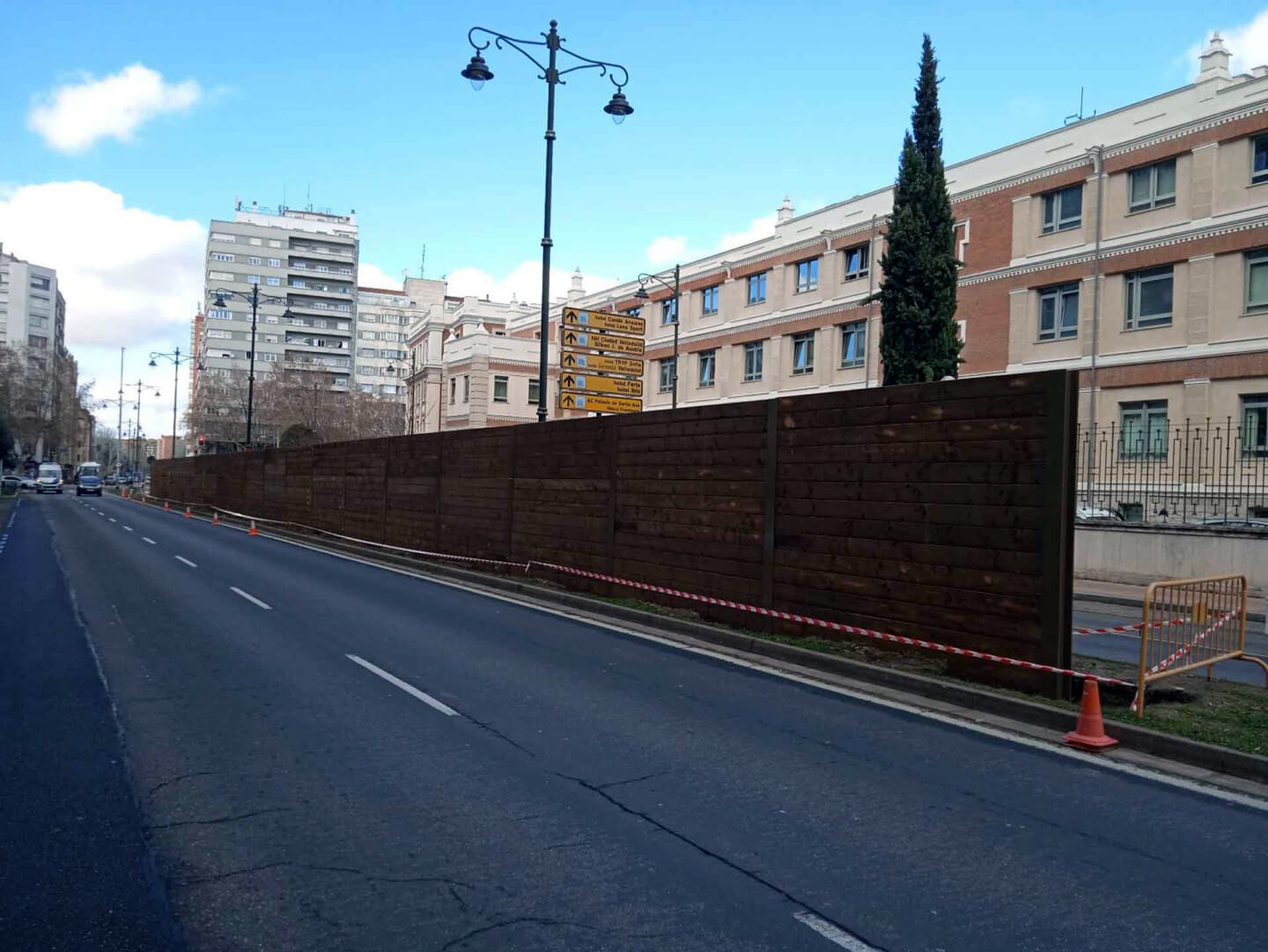
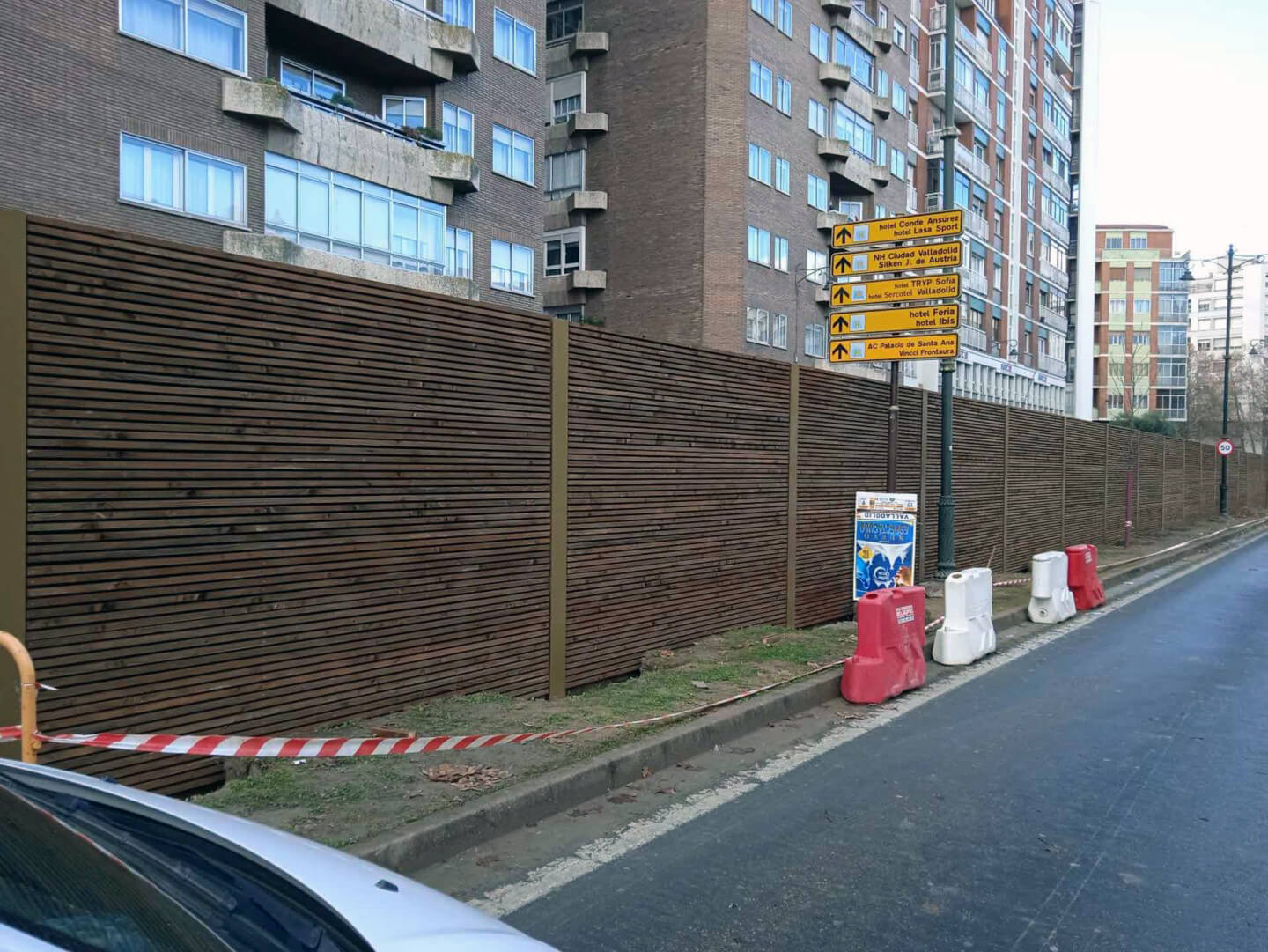
This sound-absorbing panel is made up of wood modules of varying dimensions, which fit between the HEA/HEB fastening profiles of the support structure.
The wooden acoustic panel consists of the following elements:
- Traffic side: In this part, pine wood boards are arranged with the possibility of making different combinations with boards horizontally, vertically and obliquely, achieving various aesthetic effects.
- Sound insulation: It is a semi-rigid rock wool panel with a black veil that protects it from erosion and humidity.
- Rear side: They are planed pine wood boards arranged horizontally.
- Thanks to the Metawood panel, maximum noise insulation and absorption is obtained. In addition, thanks to their natural materials they allow an excellent landscape integration.
Metagreen noise barrier with vegetal panels
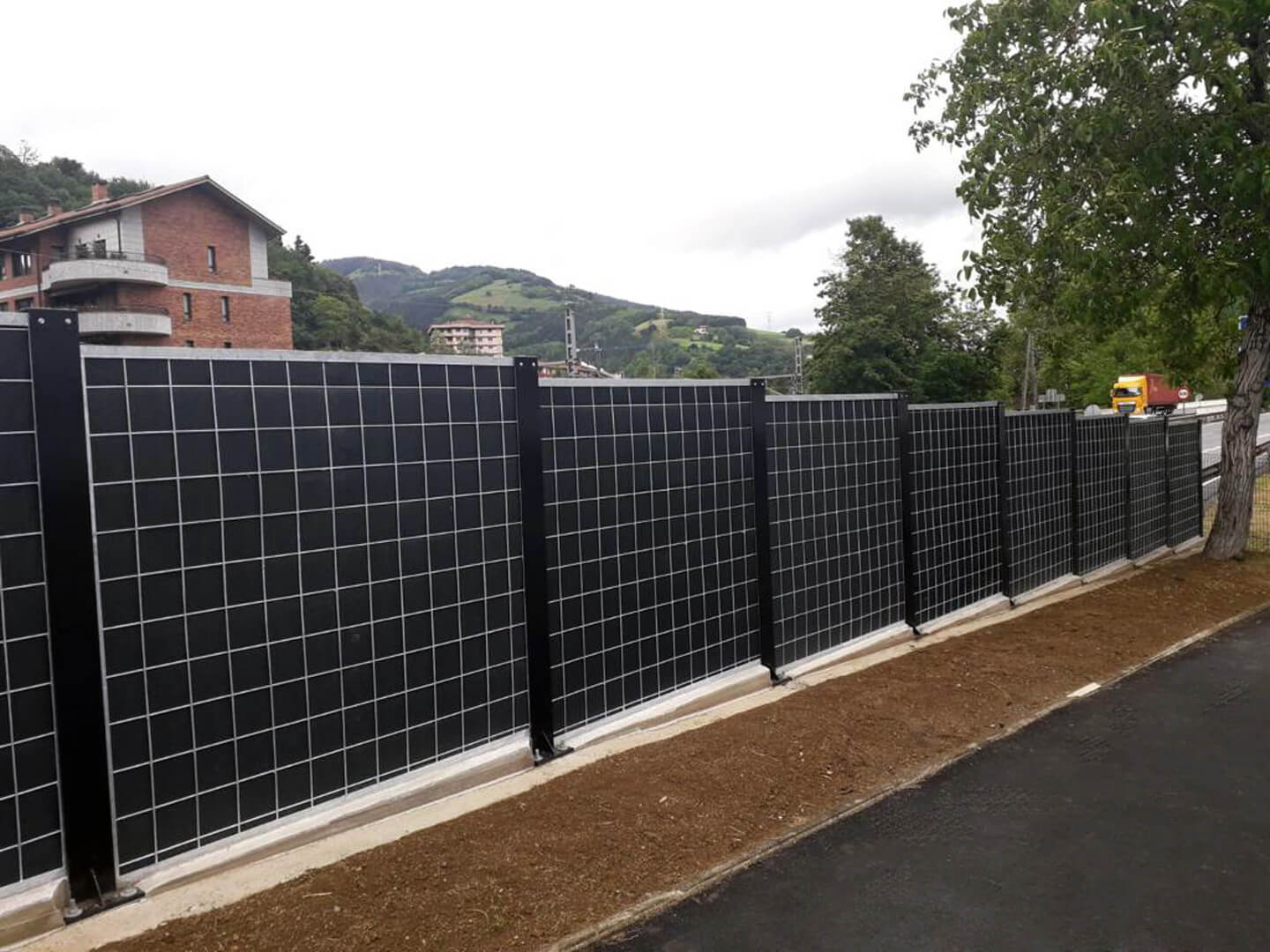
Rock wool and other materials are placed inside the vegetable acoustic panels, along with a green plastic mesh that facilitates the growth of vegetation. Rock wool is capable of retaining rainwater inside, becoming a highly valuable moisture reserve both for animals and to facilitate the growth of vegetation. Metagreen panels are made of recyclable and sustainable materials.
The Metagreen acoustic screen guarantees an excellent acoustic and absorbent effect, in addition, it has a long durability when undergoing a galvanized anti-corrosion treatment.
Mixed steel and methacrylate noise barrier
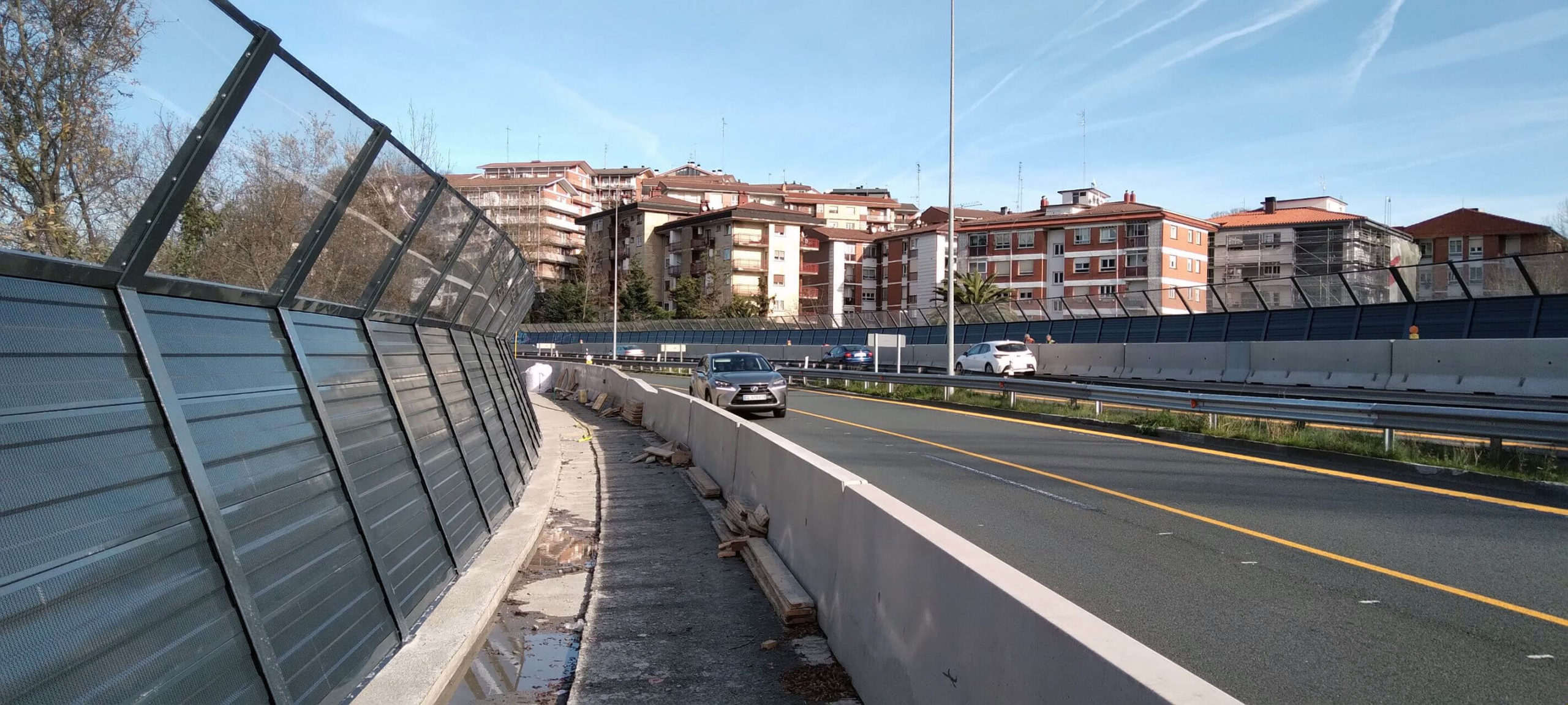
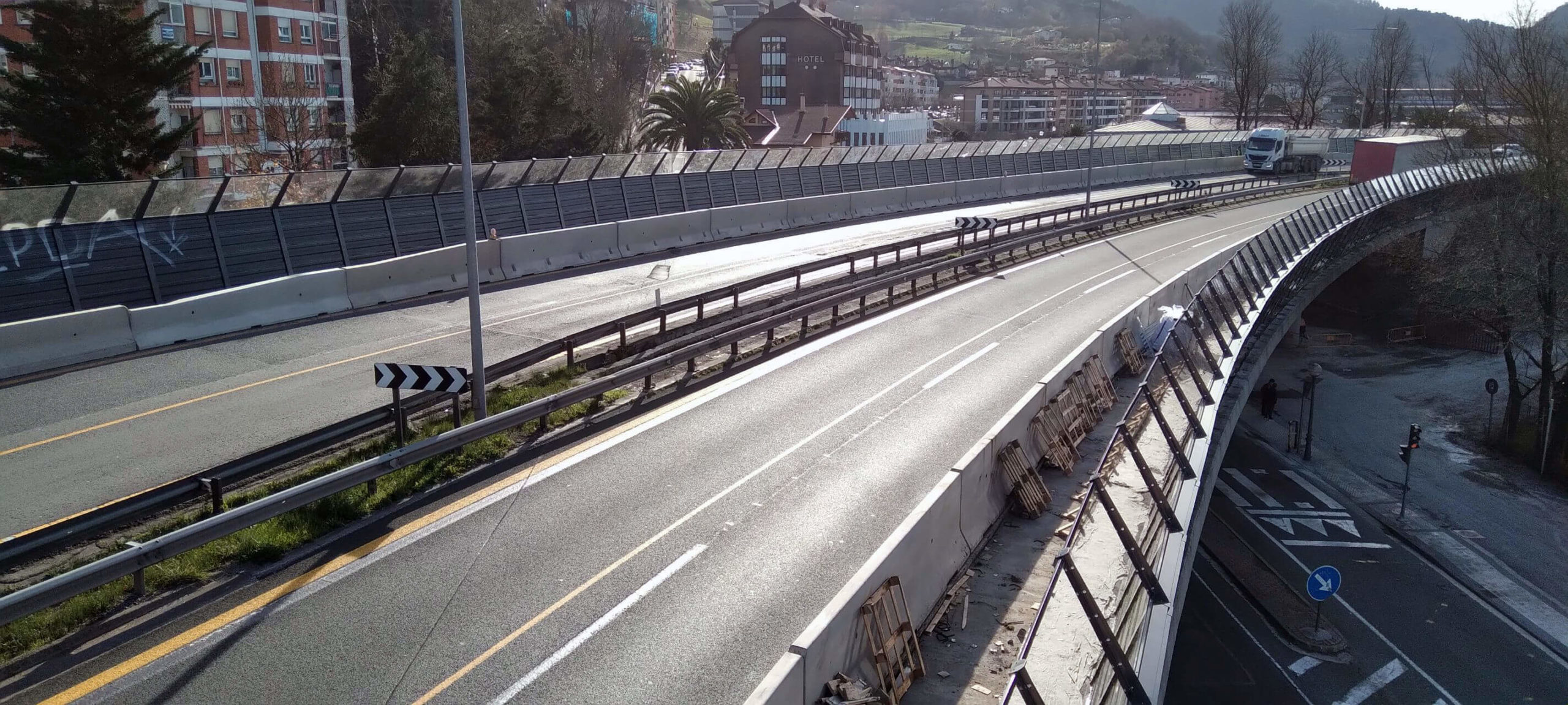
The mixed steel and methacrylate acoustic screen, like the previous two, also has exceptional sound-absorbing qualities. We put at your disposal all kinds of varied designs.
In addition, its aesthetics provide excellent landscape integration.
We show you the mixed acoustic screen of steel and methacrylate that we installed in the work of the N-1 in Lasarte (Guipúzcoa).
If you need more information about our acoustic screens, or want to know our complete range, contact us. We will be happy to help you.
